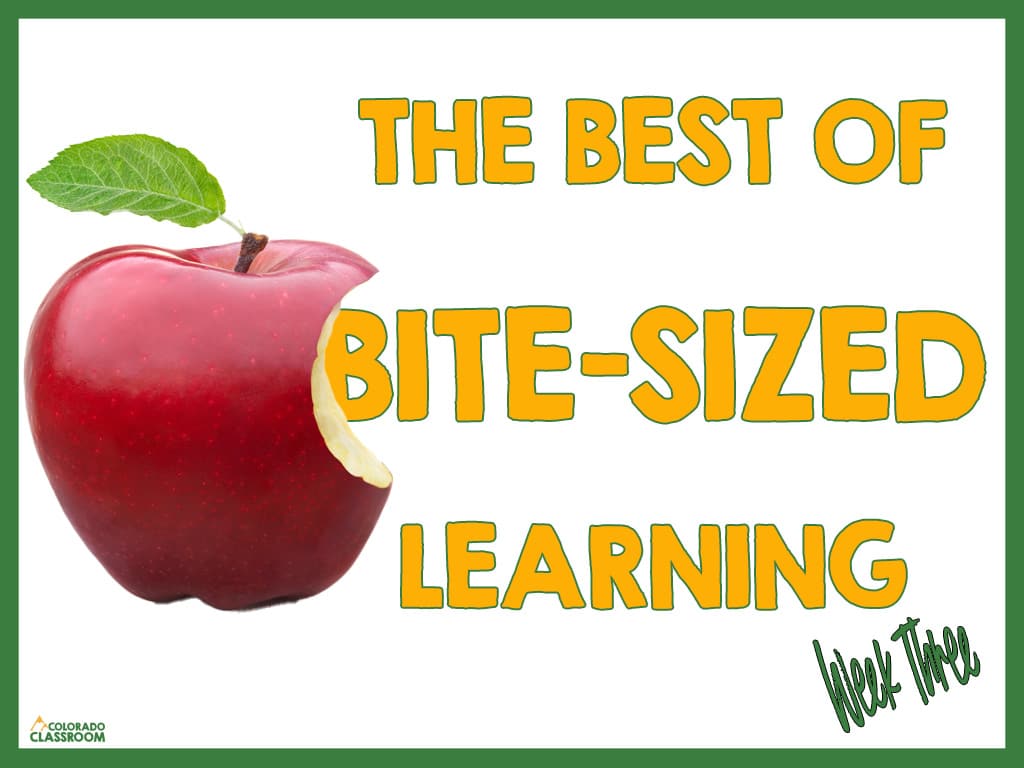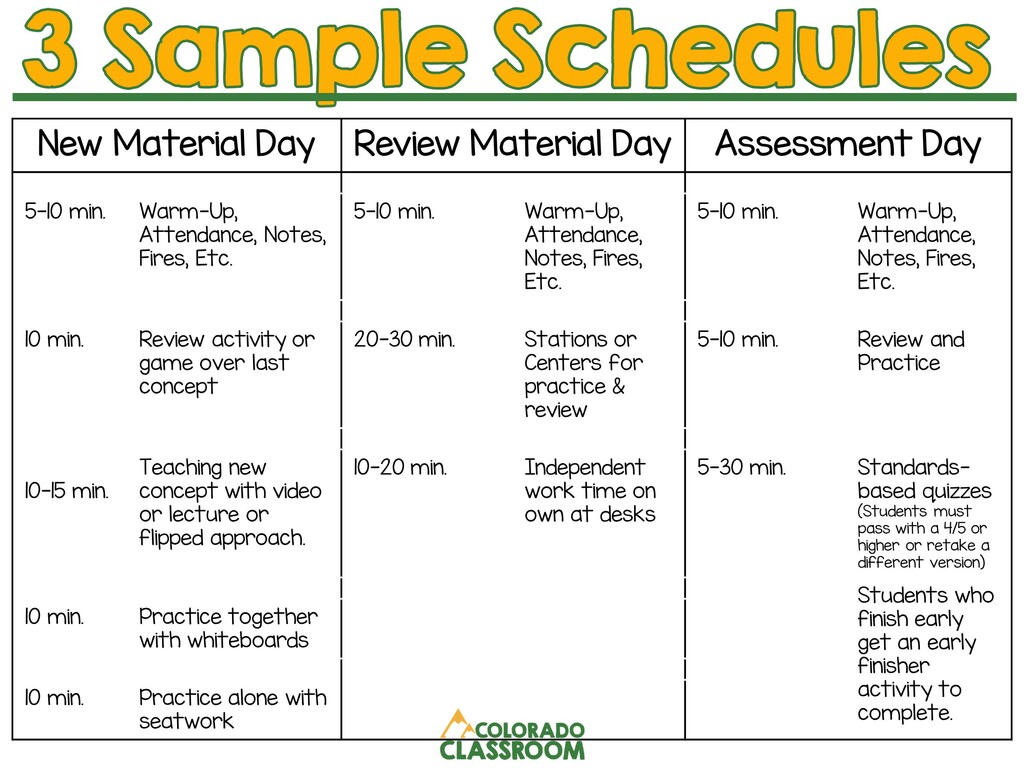The Best of Bite-Sized Learning – Week Three
Bite-sized learning schedules come in many shapes and sizes and can be made to fit many learning days. We’ll be looking at some sample schedules from my experience with bite-sized learning while teaching math in a middle school setting.

If you would like to head back and check out weeks 1 and 2, you can be caught up in minutes. Just click here to see what bite-sized learning is and how it began. Or click here to see more than five ways how to use bite-sized learning in your classroom. In less than 10 minutes, you can be caught up and jump back here for this final installment.
Although these bite-sized learning schedules are from a math class, the gist is the same. You can use the ideas in any subject. Keep the activities flowing and allow for movement, creativity, and interaction between students as much as possible.
Our periods were 50 minutes long, but with just a few tweaks, these sample bite-sized learning schedules would work just fine for 40 or 45-minute classes or for a block schedule. The real key is to use lots of different methods and modes when teaching. It can be tiring at first, but once you do it for a while, it becomes more routine.

New Material Day
For bite-sized learning schedules, try breaking your day into five 10-minute blocks when teaching new material. Have students rotate through the activities in small groups or teach them as a whole group. Mix it up to keep them on their toes and prevent the routine from getting boring. By reviewing, teaching, and practicing in two forms, you’ll be able to assess your students in a variety of ways throughout the period.
Review Material Day
When reviewing material prior to a summative exam, a longer review can happen via a game, presentations, stations, centers, etc. Give some time at the end for independent practice, formative evaluation, or questions.
Assessment Day
On assessment day, lessons are naturally shorter, and assessments are longer. Yet, 50-question tests do not have to be the method all the time. We used standards-based quizzes with just 5 questions on them most of the time. Students were required to get a 4 or 5. Otherwise, they had to repeat another version of the quiz again at a later date. Then once a quarter, we offered a more comprehensive exam to assess levels. Most students felt that it took the pressure of the big unit tests all the time.
Bite-Sized Learning Summed Up
Bite-sized learning is a chunking time method. It helps capture attention spans in a competitive world through movement, activity, and constantly shifting opportunities. Many methods fit into the ideas of bite-sized learning, as well as the schedules. It is a very versatile and flexible learning style.
I hope you enjoyed this series and that you got some ideas about how to use it in your classroom as well. Let me know in the comments if you plan to try it with your students or if you have any questions.


Pingback: Bite-Sized Learning Series: Week One - The Colorado Classroom
Pingback: Sample a Taste of Bite-Sized Learning: A Series - Week Two - The Colorado Classroom